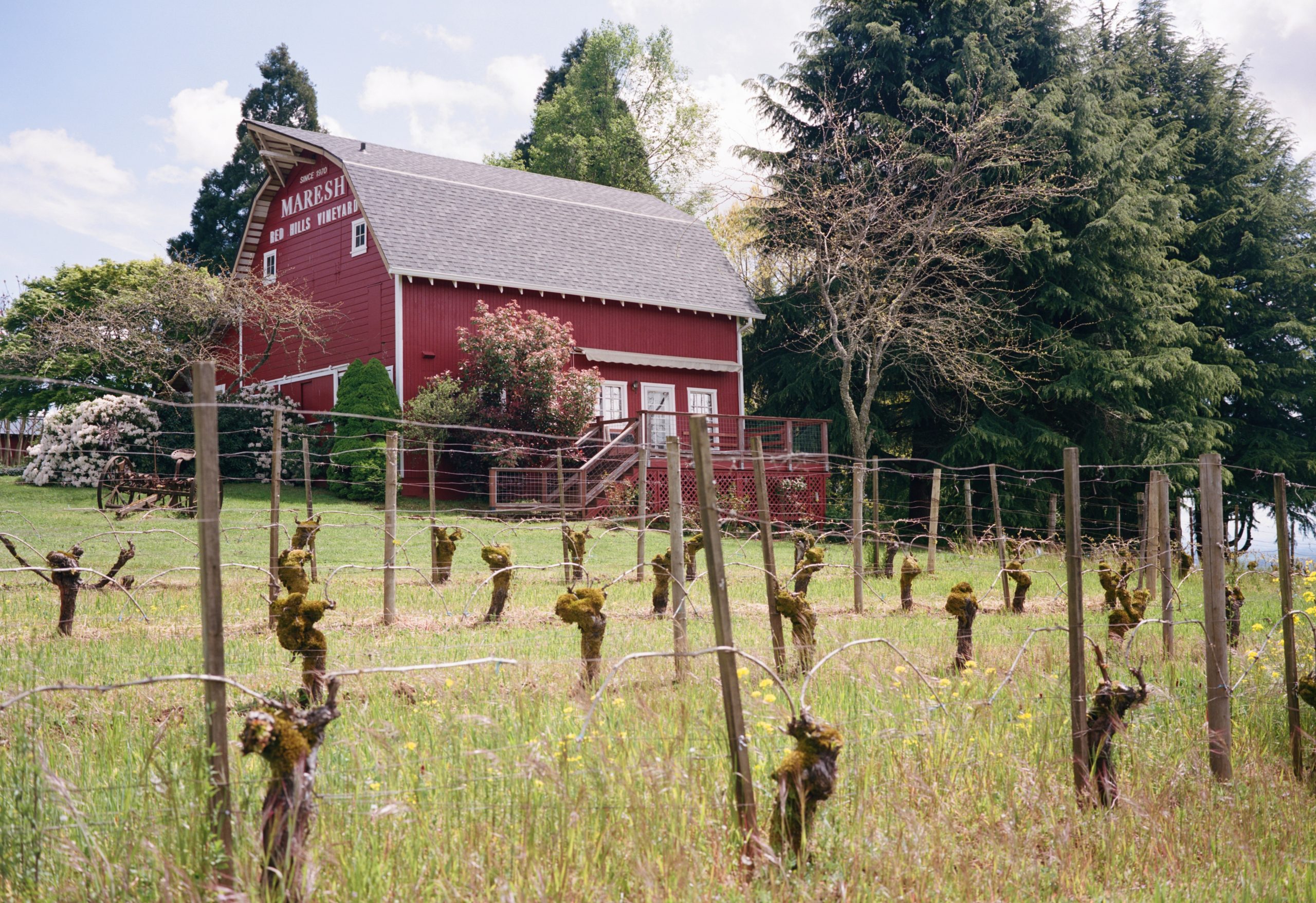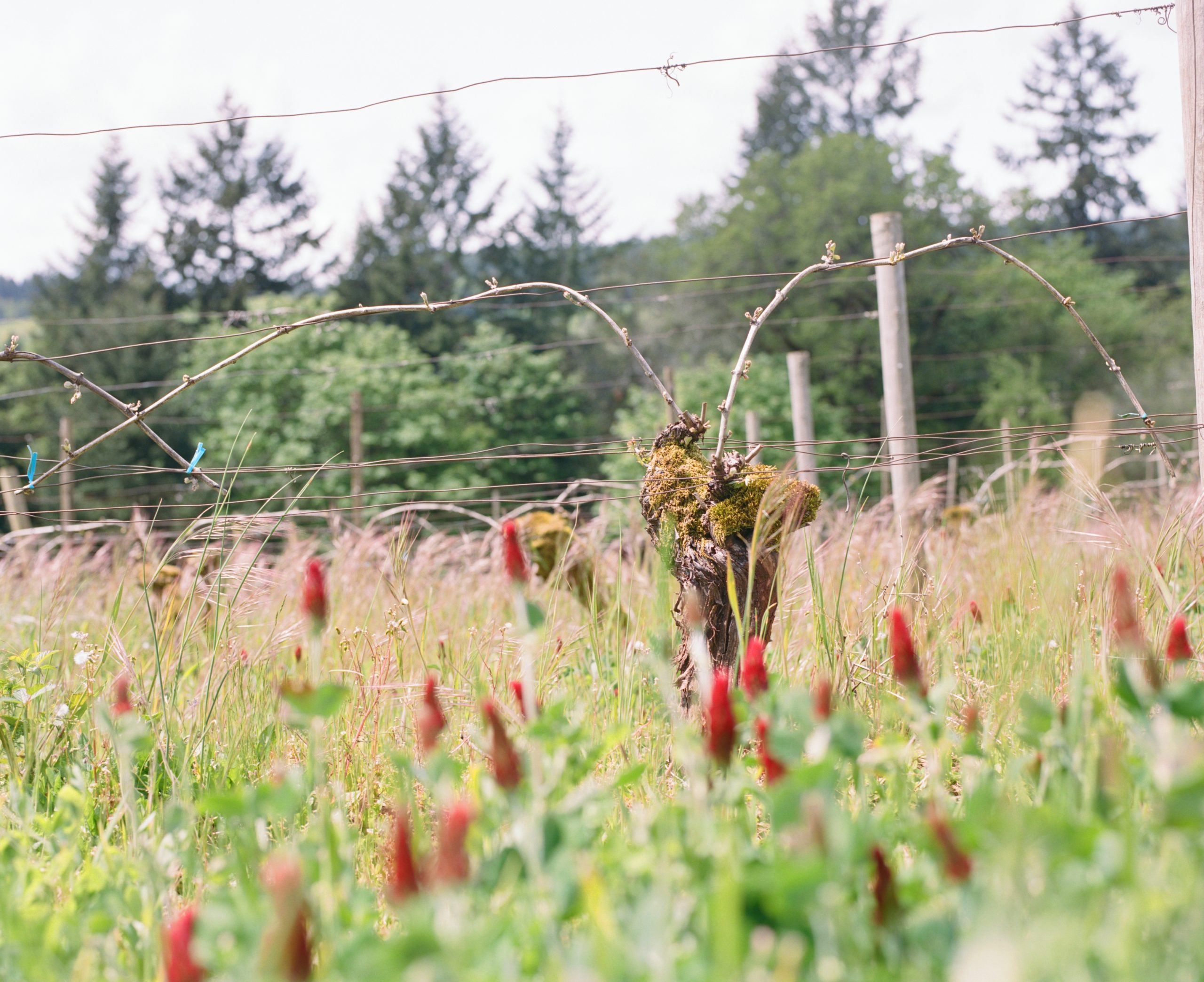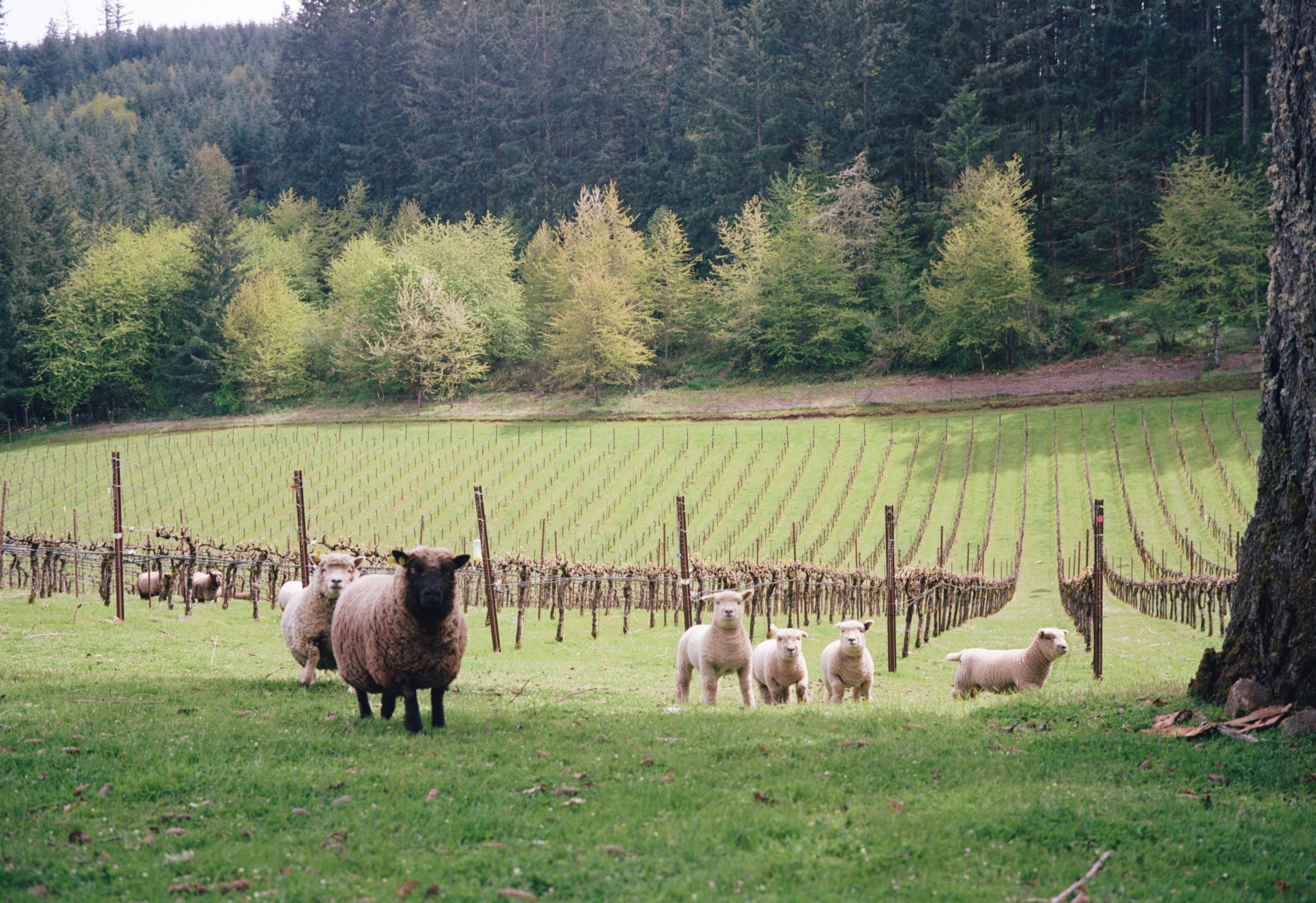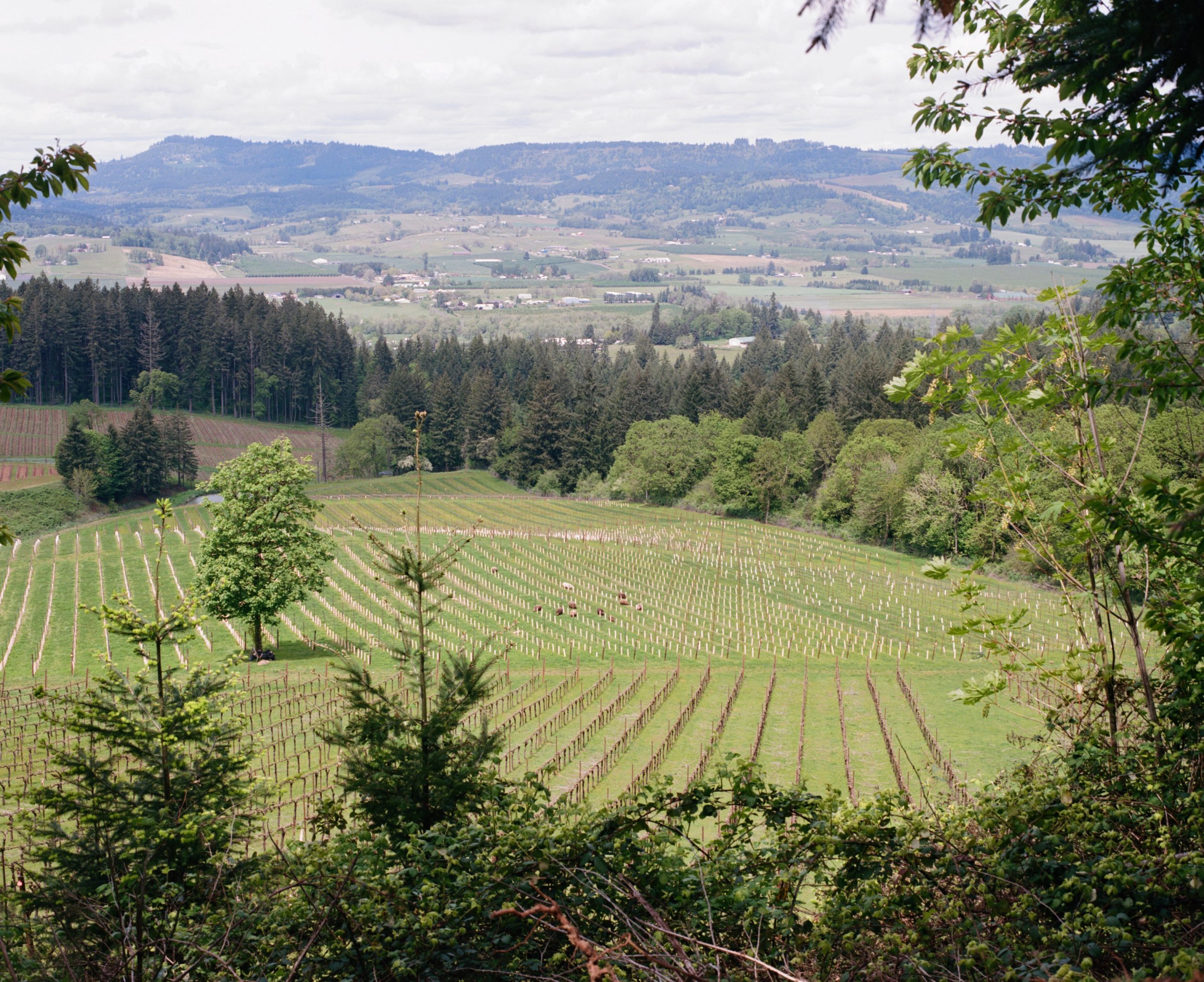Vintage Update – May 2022
While 2021 brought record drought to Oregon, 2022 has set a rainfall record. There are no constants in farming!
This growing season reminds Martha Maresh, who farms Maresh Vineyards, of the “good ole days” in the Dundee Hills decades ago. Scott Flora, owner and winemaker of Native Flora, calls this “old-school Oregon wine weather” and recalls similarities between this year and 2011 when La Niña was also in control of the North Pacific.

While we would typically see inflorescences in May, this year the grape flower clusters and fruit set are unlikely to appear until June. The cooler temperatures have slowed down the growing season, and we’re looking forward to a temperate summer and later harvest with plenty of hang time for the grapes to ripen.
The extended spring weather has given cover crops a banner year. “This nutrient-rich vegetation grown between the vineyard rows increases the water capacity of the soil,” says Maresh. “It replenishes the aquifer and will enhance the soil with nutrients when we cultivate this biomass into the ground throughout the summer months.” This groundcover and surrounding native plant life provide a natural winter habitat for beneficial insects in the vineyard until harmful pests, their food source, become active as spring ensues.

Here’s a look at some of the vineyard ecosystem members at work in the Dundee Hills:
Sheep: These wooly friends at Native Flora mow the grass, keep weeds under control, sucker the vines, pull lower leaves, and offer natural fertilization. If vines are trellised higher, nibbling sheep can’t reach the leafy canopy or fruit. With sheep in the fields, vineyard managers lower their diesel consumption and reduce soil compaction because there’s no need to use a fossil-fuel–powered mower.

Insects: The presence of beneficial bugs helps protect the health of the vineyard ecosystem. Ladybugs, predatory mites, the praying mantis and spiders keep harmful insects at bay. These pests would otherwise damage the roots of the vines, suck sap from the leaves, devour tender shoots, and consume both leaves and clusters. The presence of predatory insects also reduces the need for spraying the vines with sulfur which again reduces labor hours, soil compaction and diesel consumption.
Frogs: These amphibious friends are masters at insect and slug control. They also serve as an early indication system for the entire vineyard ecosystem. If their population starts to suddenly decline, you know something is off kilter in the ecosystem.
Bees: Though grape vines are self-pollinating, bees contribute to the pollination of other important plants in a vineyard ecosystem. They’re pivotal for bountiful cover crops as well as weed population, which offer a home to predatory insects. Maresh is particularly fond of her mason bees. She notes, “They provide twenty times more pollination than honey bees and are a small, dark bundle of energy as they flit from blossom to blossom. They are contributors to our cherries, prunes and apples we raise on the farm.”
Chickens and Ducks: Chickens and ducks can both offer benefits in the vineyard. Chickens will dine on termites, ants, grasshoppers, and cutworms, while ducks have a penchant for slugs and snails. Both also enjoy dining on vineyard weeds, grasses and resulting seed.
Though the growing season has been slow to start, there’s still plenty of activity afoot in our vineyards. While it’s tempting to be laser focused on the grapes and the vines, winemakers and vineyard managers know there are many other components to the vineyard ecosystem. “We think of our vineyard as a single organism where everything must work together,” says Flora. “If one organ fails, the whole body gets sick.”

As the weather continues to warm into June, we’ll begin to see buds unfurling into shoots and leaves that cover our vineyards. The grapes will soon follow!
Photos by Mick Hangland-Skill
